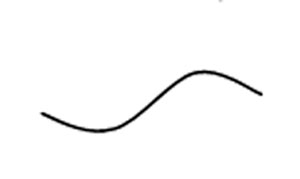This is the title of Charles Handy’s latest book. Handy is part philosopher and part a thinker of current management with a long professional and academic career and an enriching thought. His first job was with Shell in Singapore many years ago; he was first a professor and later a tenured professor at the London Business School, a writer of great books and a scholar; an absolutely exceptional man.
The key message of “The second curve” is that in order to make progress in many areas of life it is sometimes necessary to change radically, start a new course that will be different from the existing one, always requiring a completely new way of understanding the problems we face. What Thomas Kuhn called a “paradigm shift”. The real problem is that the change has to begin while the first curve remains valid. This means that those who have been at the helm during the first one have to start thinking differently about the future or, more likely, help others move forward in the new curve, which is not easy.
We ask ourselves: “why change if everything is alright?”. It is easier to see the change when the crisis appears on the horizon, but then it is very hard to implement when time and resources run out.
The good news for the “second curve” is that despite the recent changes seen in many parts of the world, in the last half century things have gone reasonably well for most people. For example, let us compare life expectancy, the range of things we can buy because our real income has increased notably, and many other improvements that have benefited the majority of mankind in the last 50 years.
What this means, according to the “second curve” theory, is that we are in an ideal position to rethink the ways in which we run society. Complacency is an indicator of the threats facing us, but also of opportunities.
A “second curve” that is perceived clearly is the need for greater emphasis on self-responsibility. We can no longer rely -says Handy- on educational and labor or employment institutions to prepare us for life and look after us. In the past it was easy for others to guide our lives; this will no longer happen and these protective institutions will increasingly become less so because they will not be permanent, but temporary. Our communities will be more of shared interests, rather than being located in the institutions.

Used as a metaphor, it is an idea known by most of us. Phrases such as “learning curve” or “moving ahead of the curve” are used in the business world when one wants to project the future.
We are less aware of the fact that it is much more: it is the line of all things human, of our own lives, of organizations, companies, governments, empires and alliances, of democracy itself and of many and varied institutions. In each case there is, or there was, an initial investment period; the results appeared next and the line rises and, if everything goes well, it keeps rising; but there is a time when the curve reaches its highest level and starts to go down. This fall is often lengthy, but decadence always awaits at the end.
The curve’s speed seems to increase, although humans manage to extend it to nearly 90 years; however, at the end there is always some kind of decadence, a depressing prospect.
But it need not be. There can always be a second curve.

The important thing is that this second curve must begin before the first one reaches the top, because only in this phase are there resources, time, energy and finances to withstand the initial fall of the second one.
The successes of the first curve can blind us to the possibilities of a technology or product, or new markets, and others will get ahead of us.
New technologies offer us second curves; identifying and using them is the new strategic challenge for education, healthcare and public administrations. And naturally, for companies.
In subsequent articles the author will examine Handy’s advice for building “second curves”.
Carlos Herreros de las Cuevas
Master of Science in Management, London Business School
Comments on this publication